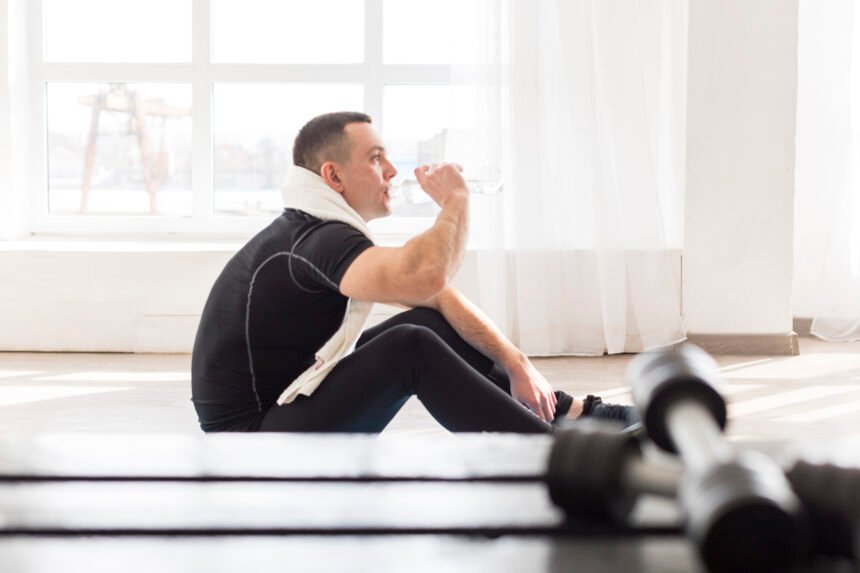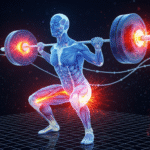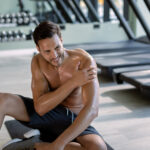Walking into a gym for the first time can feel like a big step, but it’s totally manageable with the right plan! Thisguide is designed to help beginners feel confident, build healthy habits, and make the most of their gym time.Whether you’re aiming to tone up, gain strength, lose fat, or improve flexibility, these science-backed workoutsand tips will set you on the path to success. Let’s dive in with a human touch and clear, actionable advice tomake your fitness journey enjoyable and effective.
Exercise should be regarded as tribute to the heart.
Gene Tunney
How Long Should You Work Out?
Start with a goal to stick to your workout routine for at least three months. Building a consistent exercise habit takes time, as your body and mind need to adjust to this new activity. Research shows that forming habits requires consistent effort, often taking around 66 days on average (Lally et al., 2009).Aim for 45-minute to 1-hour sessions, including warm-up and cool-down. To support muscle recovery and growth, allow at least 48 hours between strength workouts. A Monday-Wednesday-Friday schedule is a great starting point for most beginners, balancing exercise with rest to promote muscle repair (Schoenfeld et al., 2016).
How Much Weight Should You Lift?
Begin with lighter weights to focus on proper form and avoid injury. Choose a weight that’s about 60–70% of your one-rep max (the heaviest weight you can lift once with good technique). This allows you to build strength safely while progressing over time. Studies suggest moderate loads are ideal for beginners to reduce injury risk and improve form (Kraemer & Ratamess, 2004).

Increase the weight gradually—about 2–10% per week—as you get stronger, ensuring you maintain control throughout each rep. If you’re unsure where to start, try an unweighted barbell or light dumbbells and consult a gym trainer for guidance.
What Are Reps and Sets?
- Reps (repetitions): The number of times you perform an exercise in one go. For example, doing 10 squats is 10 reps.
- Sets: A group of reps followed by a rest period. Completing 10 squats, resting, then doing 10 more is two sets of 10 reps.
Your rep and set count depends on your goals:
- Endurance: 12–15 reps with lighter weights to boost stamina.
- Muscle Growth (Hypertrophy): 8–12 reps with moderate weights for size.
- Strength: 4–6 reps with heavier weights for maximal power (Schoenfeld et al., 2016).
Beginners typically aim for 3–5 sets per exercise, prioritizing proper form to maximize results and minimize injury risk.

General Tips for Every Workout
- Move Slowly: Focus on technique rather than speed or heavy weights to build a solid foundation.
- Rest Smart: Take 60–90 seconds between sets to recover without letting your muscles cool down too much.
- Stay Active During Rest: Walk lightly around the gym to keep your heart rate up and muscles warm.
- Be Flexible with Equipment: Follow the workout order when possible, but swap exercises if machines are occupied.
- Warm Up and Cool Down: Spend 5–10 minutes on dynamic stretches (e.g., arm circles, leg swings) to prep your body, and finish with static stretches (e.g., quad stretch) to aid recovery and flexibility (Fradkin et al., 2010).
Beginner Gym Workout Plans
These workout plans are tailored for different goals, designed to be approachable yet effective for beginners. Each targets specific outcomes while keeping your routine balanced and fun.
Some people want it to happen, some wish it would happen, others make it happen.
Michael Jordan
Beginner Gym Workout for Women (Toning and Lower Body Focus)
This full-body workout focuses on toning, with extra attention to legs and glutes. Don’t worry about getting bulky—lifting weights helps women build lean, strong muscles and boosts metabolism (Westcott, 2012). Perform 3 sets of 10 reps for each exercise unless noted, with 60–90 seconds rest between sets.
- Leg Raises: Targets lower abs. Lie flat, lift legs to a 90-degree angle, and lower slowly.
- Seated Leg Press: Targets quads, hamstrings, and glutes. Keep your back flat and push through your heels.
- Seated Shoulder Press: Builds shoulder strength. Press weights overhead smoothly, avoiding elbow lockout.
- Close-Grip Lat Pulldown: Strengthens the upper back. Pull the bar to your chest with elbows close.
- Bodyweight Lunges: Tones legs and glutes. Step forward, keeping your front knee over your ankle.
- Full or Kneeling Push-Ups: Works chest, shoulders, and triceps. Modify to kneeling if needed.
- Plank: Hold for 30 seconds to strengthen your core and improve stability.
Beginner Gym Workout for Men (Strength and Muscle Gain)
This full-body plan builds strength and lean muscle, emphasizing arms and core. You’ll likely see weekly progress in strength or reps. Perform 4 sets of 10 reps unless noted, with 60–90 seconds rest.
- Reverse Crunches: Targets lower abs. Lift hips off the ground, bringing knees toward chest.
- Seated Chest Press: Targets chest and triceps. Press weights forward with shoulders back.
- Seated Rows: Strengthens back muscles. Pull handles toward your torso, squeezing shoulder blades.
- Wide-Grip Lat Pulldown: Builds upper back and lats. Pull the bar to your chest with a wide grip.
- Seated Leg Press: Works quads, hamstrings, and glutes. Drive through your heels.
- Dumbbell Seated Shoulder Press: Builds shoulders. Press dumbbells overhead with control.
- Dumbbell Bicep Curls: Targets biceps. Keep elbows tucked and lift to shoulder height.
- Close-Grip Tricep Push-Ups: Focuses on triceps. Keep elbows close to your body.
- Cable Rotations/Twists: Engages obliques. Rotate your torso while keeping hips stable.
Beginner Gym Workout for Strength
This plan uses heavier weights and lower reps (4–6) to maximize strength. Start with a manageable weight and increase when you can handle 8–10 reps comfortably. Perform 4 sets of 6 reps unless noted, with 90 seconds rest.
- Barbell Push Press: Works shoulders and upper body. Use slight leg drive to press the bar overhead.
- Goblet Squat: Targets quads and glutes. Hold a dumbbell close to your chest and squat.
- Dumbbell Single-Arm Row: Strengthens back. Pull the dumbbell toward your hip, keeping your elbow close.
- Shoulder Lateral Raise: Isolates shoulders. Lift dumbbells to shoulder height with a slight elbow bend.
- Bench Press: Builds chest strength. Lower the bar to your chest and press up with control.
- Pull-Ups/Assisted Pull-Ups: Targets back and biceps. Use a band or machine for assistance.
- Barbell Bicep Curls: 8 reps. Lift the barbell to shoulder height, keeping elbows tucked.
- Cable Overhead Tricep Extensions: 8 reps. Extend arms overhead, keeping elbows stable.
- Rotating Plank: Hold for 30 seconds, alternating sides to engage obliques.
Beginner Gym Workout for Fat Loss
This high-intensity workout elevates your heart rate to burn calories and boost cardiovascular fitness. It also triggers excess post-exercise oxygen consumption (EPOC), increasing calorie burn post-workout (Borsheim & Bahr, 2003). Perform 3 sets of the listed reps, with 60 seconds rest.
- Plate Thrusters: 15 reps. Squat while pressing a weight plate overhead.
- Mountain Climbers: 20 reps. Drive knees toward chest in a plank position.
- Box Jumps: 10 reps. Jump onto a sturdy box, landing softly.
- Walkouts: 10 reps. Walk hands out to a plank and back to standing.
- Renegade Rows (Full or Kneeling): 10 reps per side. Row dumbbells in a plank position.
- Push-Ups (Full or Kneeling): 15 reps. Maintain a straight body line.
- Treadmill Run/Steep Incline Walk: 10 minutes, no hands. Alternate running and walking.
- Supermans (Full or Kneeling): 10 reps. Lift arms and legs off the ground together.
- Crunches: 10 reps. Engage abs to lift shoulders off the ground.
Beginner Gym Workout for Flexibility
This workout improves mobility and relieves tension, perfect for those who sit for long periods. Perform in a spacious area, like the gym’s yoga or stretching zone. Hold each stretch on both sides for the specified time to enhance flexibility (Behm & Chaouachi, 2011).
- Child’s Pose to Upward Dog: Hold for 10–15 seconds. Flow between poses to stretch back and chest.
- Hip Openers: 10 reps. Lunge and rotate to open hips.
- Kneeling Shoulder Stretches: 5 reps. Thread one arm under your body to stretch shoulders.
- Thoracic Rotation Raises: 10 reps. Rotate your upper spine while seated or kneeling.
- Frog Pose: Hold for 10–15 seconds. Stretch inner thighs and hips.
- Hip Flexor Stretches: Hold for 10–15 seconds. Lunge forward to stretch the front of the hip.
- Lateral Lunges: 5 reps. Stretch inner thighs by lunging side to side.
- Scorpion Twists: 2 reps, hold for 5–10 seconds. Twist to stretch spine and hips.
Beginner Cardio Equipment Workout
This mix of steady-state and interval cardio boosts heart health and endurance. Intervals enhance cardiovascular efficiency and calorie burn (Gibala et al., 2012).
- Treadmill Brisk Walk: 5 minutes, add incline for intensity if comfortable.
- Rower (Steady Pace): 5 minutes to build endurance.
- Treadmill Intervals: Alternate 1-minute run with 1-minute walk for 10 (easy), 15 (medium), or 20 (hard) minutes.
- StairMaster (Steady Pace): 10 minutes to work legs and cardio.
- Cross Trainer Intervals: Alternate 1-minute low effort with 1-minute high effort for 10 (easy), 15 (medium), or 20 (hard) minutes.
Beginner Circuit Workout
Circuit training burns calories and targets multiple muscle groups efficiently, ideal for those short on time. It blends strength and cardio for a dynamic session (Alcaraz et al., 2011). Perform each exercise for 45 seconds, with 15 seconds rest, and complete the circuit 2–3 times.
- Rower: 2 minutes to engage full-body muscles.
- Alternating Side Plank: Rotate side to side to work obliques.
- Bicep Curl to Shoulder Press: Combine arm and shoulder strength.
- Benched Tricep Dips: Target triceps using a bench.
- Squat Jumps: Boost cardio and leg power with explosive jumps.
- Push-Up to Superman (Full or Knees): Combine upper body and core work.
Exercise Principles to Reach Your Goals
To maximize your workouts, keep these principles in mind, tailored to your lifestyle and goals:
- Fuel Your Body: For fat loss, aim for a calorie deficit by burning more than you consume. For muscle gain, eat protein-rich foods (1.6–2.2 g/kg body weight daily) to support muscle repair (Morton et al., 2018). Eating a small meal or protein shake 30–60 minutes after training can enhance recovery.
- Account for Your Lifestyle: If you sit for long hours at work, prioritize standing exercises like squats to improve mobility and counteract tightness. Regular movement breaks during the day also benefit overall health (Owen et al., 2010).
- Warm Up Right: Start with 5–10 minutes of dynamic stretches (e.g., leg swings, arm circles) to increase blood flow and reduce injury risk. Static stretches before workouts can reduce strength, so save them for after (Behm & Chaouachi, 2011).
- Cool Down Properly: Finish with static stretches (e.g., hamstring or calf stretches) to improve flexibility and reduce muscle soreness (Herbert et al., 2011).
- Progress Gradually: Increase weight, reps, or intensity over time to challenge your muscles, a principle called progressive overload, key for strength and growth (Schoenfeld et al., 2016).
Key Takeaway
Starting at the gym might feel intimidating, but with a clear plan, you’ll be moving with confidence in no time. Pair these workouts with guidance from a trainer or group classes like HIIT, yoga, or strength training to stay motivated and learn proper form. Stay consistent, focus on technique, and enjoy the process of becoming a stronger, healthier you!
Starting your fitness journey? Learn how to train every muscle group effectively in our Ultimate Guide to Muscle Groups.









